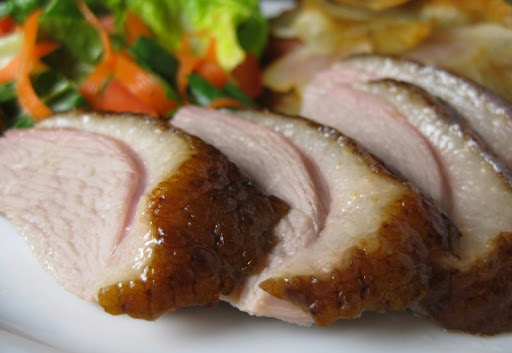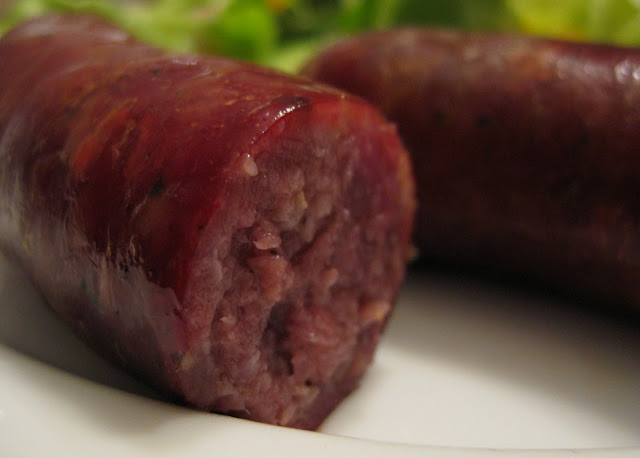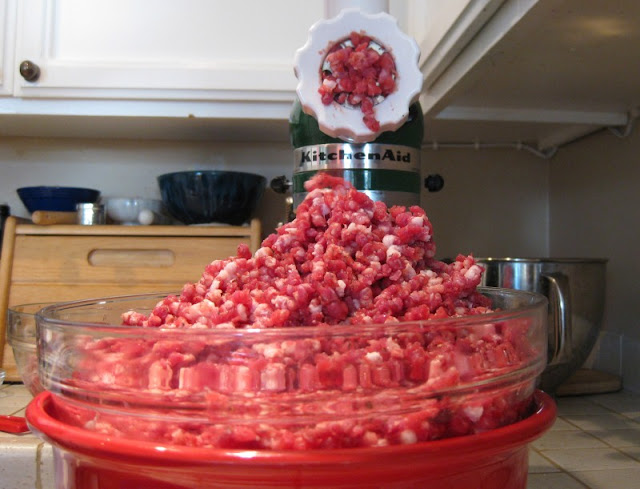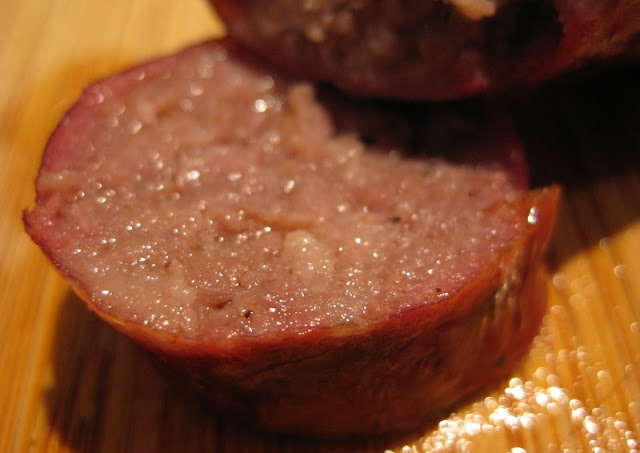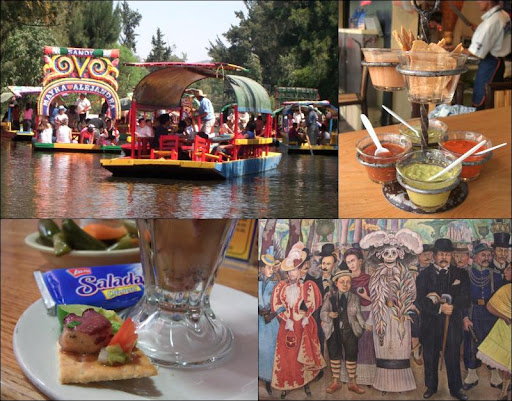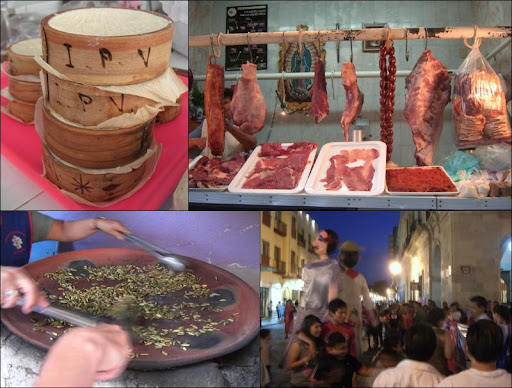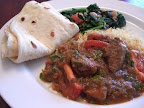
We've been looking into local sources of pork to meet our ever-expanding curing and smoking demands. Recently we had a very informative email exchange with Dave Heafner of Da-Le Ranch in Lake Elsinore. We thought that others might be interested in this information as well, so here is the conversation we had:
-----
Menu in Progress: I understand that you custom raise raise pigs for individuals. We are interested in humanely raised, tasty pigs for cooking and curing (and, of course, eating). Can you give me some additional information about your ranching methods, procedures and subsequent costs?
Da-Le Ranch: We believe in humane treatment of animals, in so far as it is possible...my wife draws the line at letting them sleep in the house. :o)
Just yesterday, her favorite sow followed her around like a dog all day long, and refused to go back into the pen. "Mommie" had to chastise her to get her back in the pen. The day before, she led a rampage herd into the back yard, and had a play day in the garden and on the back porch. What a mess.
MiP: How are they housed, and what are they fed (generally)?
Da-Le: The pigs are penned, due to our rural location, and predators: bobcats, cougar (Mountain Lions), coyotes and wild dogs. The smaller pigs are allowed free ranging most of the day, but go up with mothers and into holding pens in the evening for safety. There are covers for them to get out of the rain or sun.
The little guys scurry around the farm rooting and digging everything up in their way. Fortunately, only one has discovered the worm farm, and she did so much damage she became a volunteer for a trip to the packing plant soon thereafter.
We feed blended grains and surplus/salvaged vegetables, grains and dog food. Occasionally we get a load of tortillas from a tort factory, and they love the treat. They are mostly flour and corn too. What we DON'T feed is important to know too...no institutional waste feed (slop) from schools and prisons. We'll leave that to the big commercial pig farmers.
Finally, our main philosophical outlook is, "a happy pig is a tasty pig!"
MiP: What types of pigs do you raise?
Da-Le: We have crossed breeds with the following in the background: Duroc, Lancaster, Spots, Yorkshire, and Hampshire. Of course, we didn't originally start with purebreds, so we don't know if there are any others in the mix. We do know that they taste great. My wife was not a pork eater until I slaughtered the first one we raised. With a bit of coaching, she tried a piece of pork chop, and was instantly converted. Now, after lamb and rabbit, her first love of meat is the "other white meat" - pork.
MiP: What is the season / time period involved in raising a pig? When is it harvested?
Da-Le: Generally, it takes 3 months, three weeks and 3 days for a pregnant pig to deliver the babies. They are weaned and ready for sale between 4 and 8 weeks after that. So from inception to reception (if one is purchasing a weaner) about 5 to 6 months go by.
For full sized pigs for the freezer (ranging from 250 to 350 lbs.) it takes from six to ten months, depending on the time of year, feed and other considerations.
When we're custom raising a pig for a customer, it is ready, regardless of weight, at six months. It costs us too much money to feed one longer than that.
MiP: I know that some people purchase a quarter or half pig -- can you please give me approximate costs for these options versus purchasing a whole hog? (Understanding that different breeds will have different costs).
Da-Le: The different breeds currently have no affect on the price of the pigs. We are introducing a heritage line soon, and those will be two or three times the price of the others, due to many factors.
With our current stock, a quarter and half are available almost any time. Basically, when cutting and wrapping the pig, the packing plant splits each cut into either two or four parts (depending on how many people are purchasing the pig).
Our "hanging weight" price for a pig includes slaughter, cut and packing, and is as follows:
- 1/4 pig is $6 per lb.
- 1/2 pig is $5.50 per lb.
- Whole hog is $5 per lb.
We may be forced to raise these prices [soon] however, due to spiraling costs on all our feed, help, and everything else needed to raise them. Leslie and I are evaluating this....
If you want a whole pig, the pricing is different. "On the hoof" means alive, and we sell butcher/freezer pigs for $1.50 per lb. "on the hoof." We have a scale available, and you pick the pig up, pay cash and take it to slaughter.
You can have the pig slaughtered on your own, or can contract us to do it for you. The price for us to do it is $150, regardless of the size of the pig. We discount this price when someone orders more than one at a time. This charge covers transportation of the pig to the slaughterhouse, kill, clean, de-hair, and transport to the packing plant. Packing and cutting is your responsibility, and the custom butcher will call you to get your specifications for the way you want the pig prepared for your freezer. Pick up of the finished pig is your responsibility when it is finished.
MiP: Can I keep the "extras" - i.e. head, feet, ears, liver, heart...?
Da-Le: The cost above includes your getting the head, feet, ears, liver, heart, and kidneys, if you specify. We can save the intestines and stomach too (for stuffing sausages), which we can get cleaned for you when the pig is slaughtered, for an extra fee (I think that's generally $20 - $30).
-----
Dave can be contacted about his farm-raised pork through
his website, or you can find him at the
Little Italy Farmers Market on Saturdays. Following this email exchange I met Dave at the market and learned that he not only offers USDA inspected pork, but beef and lamb as well. So far we've eaten some very tasty pork and lamb chops, and the other day we picked up some nice looking pork jowls and have plans to turn them into Guanciale. More on that later!
Update: The folks at Sea Rocket Bistro just
posted a set of videos of a visit they took to Da-Le Ranch.
The picture at the top of this post was adapted from Clipart ETC at the University of South Florida. The original source was an illustration from The Wonder Clock by Howard Pyle and Katharine Pyle (New York: Harper & Brothers, 1915).




